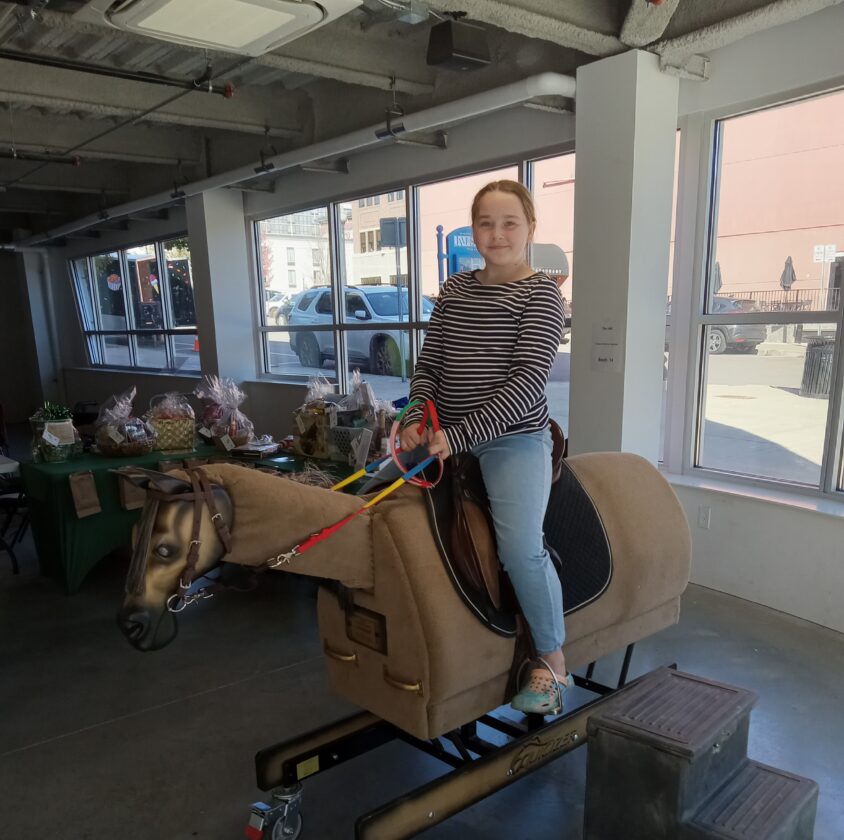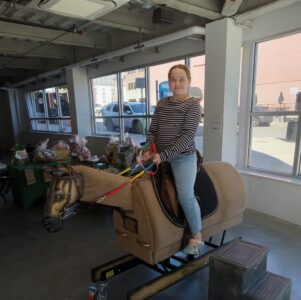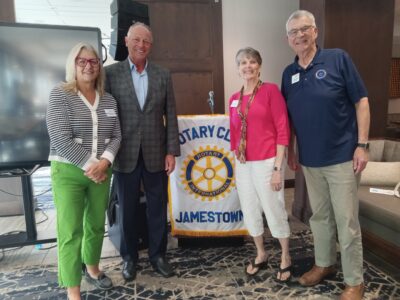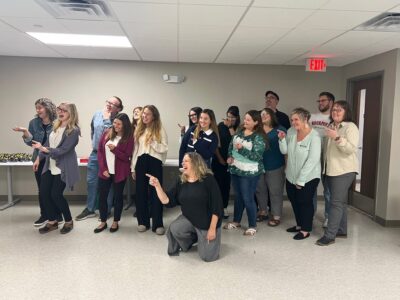Finding Harmony In The Saddle

At Pet Expo 2025, Audrianna Spinler from Ellington tries out the Equicizer for demonstration on posture, alignment and core strength needed to engage movement.
Physical therapists are trained to believe in the body’s ability to heal through movement. But what happens when your own body falters, when pain and fatigue creep in, and the familiar strategies don’t work? It’s difficult to feel at odds with the very principles you’ve built your career upon.
Last June, I held a back clinic at Centaur Stride, a therapeutic riding center that has filled my life with joy. The session was targeted for caregivers struggling with back pain from the daily lifting and bending work required, particularly those caring for children who cannot stand or walk on their own.
We began with posture assessments and self-treatment techniques, then moved on to a riding component, an experiment in awareness and pain reduction. The results were remarkable. Many participants reported significant relief; one even experienced complete disappearance of back pain.
Why does that happen?
The human body is a marvel of biomechanics, bones, muscles, and connective tissues designed to move in perfect harmony. When that alignment is lost, even slightly, the consequences ripple throughout the body. Cartilage wears down, tendons inflame, and muscles strain under the imbalance.
When you sit astride a horse, your hips are gently placed in their most stable position. The horse’s broad back provides a natural base of support, encouraging alignment and core activation. (Of course, those with hip or spinal surgeries need physician clearance and may not be a candidate for riding.)
As the horse moves, the rider’s pelvis responds, rolling, tilting, and shifting in subtle patterns that mimic natural walking motion. This “pelvic mobility” helps realign the body’s kinetic chain, the network of joints and muscle activation from surface contact ground reaction, in sitting, from the pelvis, up and down. With each stride, the horse’s motion coaxes the rider’s muscles into balance, restoring posture and relieving joint strain. Instructors may offer verbal cues, but it is truly the horse who facilitates these reactions.
For riders, this concept is known as centered riding: finding harmony with the horse through correct alignment and core engagement.
Totally disappointed in my own condition and really giving up on a better tomorrow, literally and figuratively, I realized I needed to take my own advice. My health was declining, my breathing restricted, my energy fading. Determined to take another shot to fight back, I began gentle chair and floor exercises to build strength. But then came another setback, plantar fasciitis. The stabbing pain in my foot made walking unbearable, even more than my knee pain and breathing limitations.
I knew the textbook treatments, stretching, massage, core work, alignment exercises, but it felt like such an effort and waste of energy.
After the Centaur Stride clinic, I decided to test a theory. I scheduled five consecutive days of horseback riding, hoping to ease my knee pain, awaken dormant muscles, and perhaps even help with my breathing.
The first surprise? Back pain.
It hit the moment I sat in the saddle. My pelvis tilted forward, my weight unevenly distributed, my seat bones lifted from the saddle. I realized my core muscles, once my greatest asset, were no longer doing their job. When I adjusted my pelvis back into a neutral position, I still felt uneven in the saddle. I could not assume and maintain neutral without conscious continuous effort.
So, I focused. I felt the horse’s rhythm, the gentle three-dimensional sway of his stride, forward and right, back to center, forward and left. Slowly, my abdominals woke up. I even tested my right knee in the stirrups; the pain lessened, though not gone.
After nearly an hour on a peaceful trail ride and aware of my breathing, taking deeper breaths, I dismounted using the hydraulic lift. And then I instantly became aware that my foot pain was gone.
Why?
Reflecting on it, I realized that traditional therapy exercises, like pelvic clocks and core strengthening, had missed one essential component: natural alignment in motion. The horse had done what my floor exercises could not. It gently realigned my body while activating the stabilizing muscles needed to hold that alignment in real life. The repetitive motion had integrated everything, foot, knee, pelvis, and spine, into a single, balanced system.
To my former patients who struggled without complete relief, I now understand why: alignment without dynamic activation is incomplete. The horse provided both.
The horse, it seems, is more than a partner or a therapy tool. It is a healer, one that teaches through motion, presence, and balance. The horse was made just as amazing as a human, and a perfect companion in so many ways.
Please help us continue our outreach to improve the lives of people who need our services, and to care for the horses that make all this possible. Linktr.ee/centaurstride
Claudia Monroe is founder and president of Centaur Stride.




